In the world of interior design, there’s an art form that adds vibrancy, character, and a touch of the extraordinary to our living spaces – the skillful blending of patterns. Patterns, whether they’re bold geometrics, delicate florals, or classic stripes, can transform a room from mundane to mesmerizing.
Imagine walking into a space where every corner, every surface, and every piece of furniture tells a unique story through its pattern. It’s a visual symphony where every note plays a role in crafting an environment that’s not just beautiful but truly individualistic.
However, mastering the art of mixing patterns isn’t reserved for design experts alone. It’s a skill that anyone can acquire, and with the proper guidance, you can infuse your home with a personality and style that’s distinctly yours.
In this comprehensive guide, I’ll take you through the world of patterns – from the basics of pattern types and scales to the intricacies of color coordination and layering. You’ll discover how to create a harmonious blend of patterns that transforms your space into a canvas of self-expression.

Pattern Basics
Pattern Basics are the foundational elements of interior design that shape the aesthetic appeal of a space. Patterns come in various types, such as stripes, florals, geometrics, and more, each with its unique visual character and mood. Additionally, patterns vary in scale, ranging from large, bold motifs to medium-sized designs and smaller, intricate patterns.
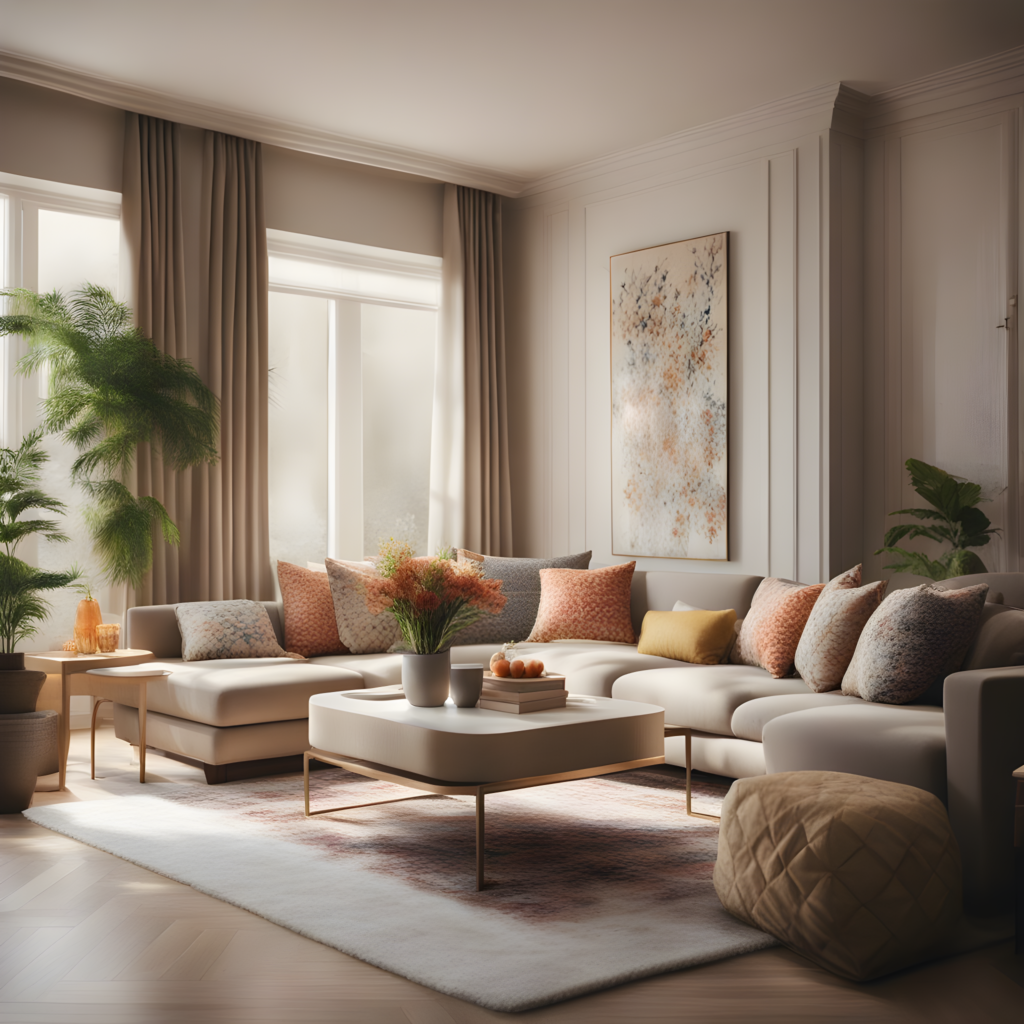
To create a harmonious pattern mix, it’s crucial to identify complementary patterns that share similar colors, styles, or themes, as they enhance cohesion and flow in a room. Conversely, contrasting patterns can add excitement and visual interest by combining designs that differ significantly in style, scale, or color, resulting in a dynamic and captivating interior. Understanding these pattern fundamentals empowers designers and homeowners to craft spaces that reflect their desired aesthetic and mood effectively.
Creating a Cohesive Look
Creating a Cohesive Look in interior design involves the skillful blending of various patterns to achieve a harmonious and visually pleasing overall design. When mixing different patterns, it’s essential to strike a balance that ensures the space doesn’t feel overwhelming or chaotic. This balance is achieved by combining bold patterns with neutral elements strategically.
The importance of this approach lies in creating a harmonious visual flow that allows patterns to coexist without competing for attention. Bold patterns, such as vibrant florals or intricate geometrics, can serve as focal points, injecting energy and personality into the room.
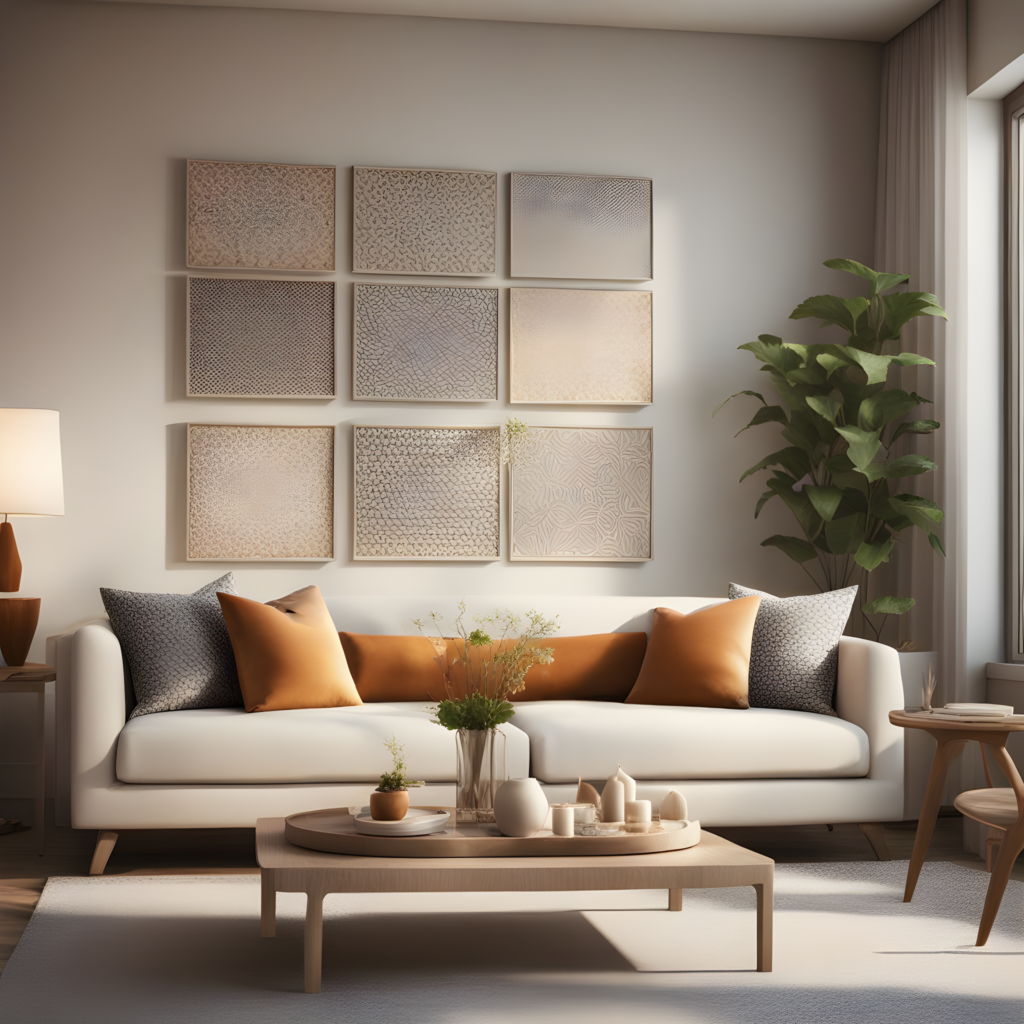
However, these bold patterns should be complemented with neutral elements, like solid colors or subtle patterns, to provide a sense of visual relief and prevent the space from feeling too busy. Tips for achieving this balance include selecting a dominant pattern that serves as the centerpiece, using it on a key piece of furniture, or as an accent wall. Then, incorporate smaller doses of complementary patterns in items like throw pillows, curtains, or rugs. These smaller-scale patterns can echo colors or motifs from the dominant pattern, ensuring a cohesive and coordinated look.
Moreover, introducing neutral elements through items like furniture upholstery, walls, or larger areas of flooring helps maintain a sense of balance, preventing the room from feeling overwhelmed by patterns. The result should be a space where patterns enhance the design, creating interest and personality while maintaining a sense of visual harmony and comfort.
Color Coordination
Color Coordination in interior design is a fundamental aspect of creating a cohesive and visually appealing space when working with patterns. It involves selecting patterns that not only complement each other but also align with an overall color scheme to achieve a harmonious look. Here’s how to choose patterns based on color schemes and ensure that the colors within the patterns complement each other:
1. Establish a Color Palette
Begin by defining a color palette for your room. This palette should consist of a primary color or two and several complementary or accent colors. The primary color(s) will serve as the dominant hue in your design, while the complementary and accent colors will add depth and interest. You can read more about the color palette here.
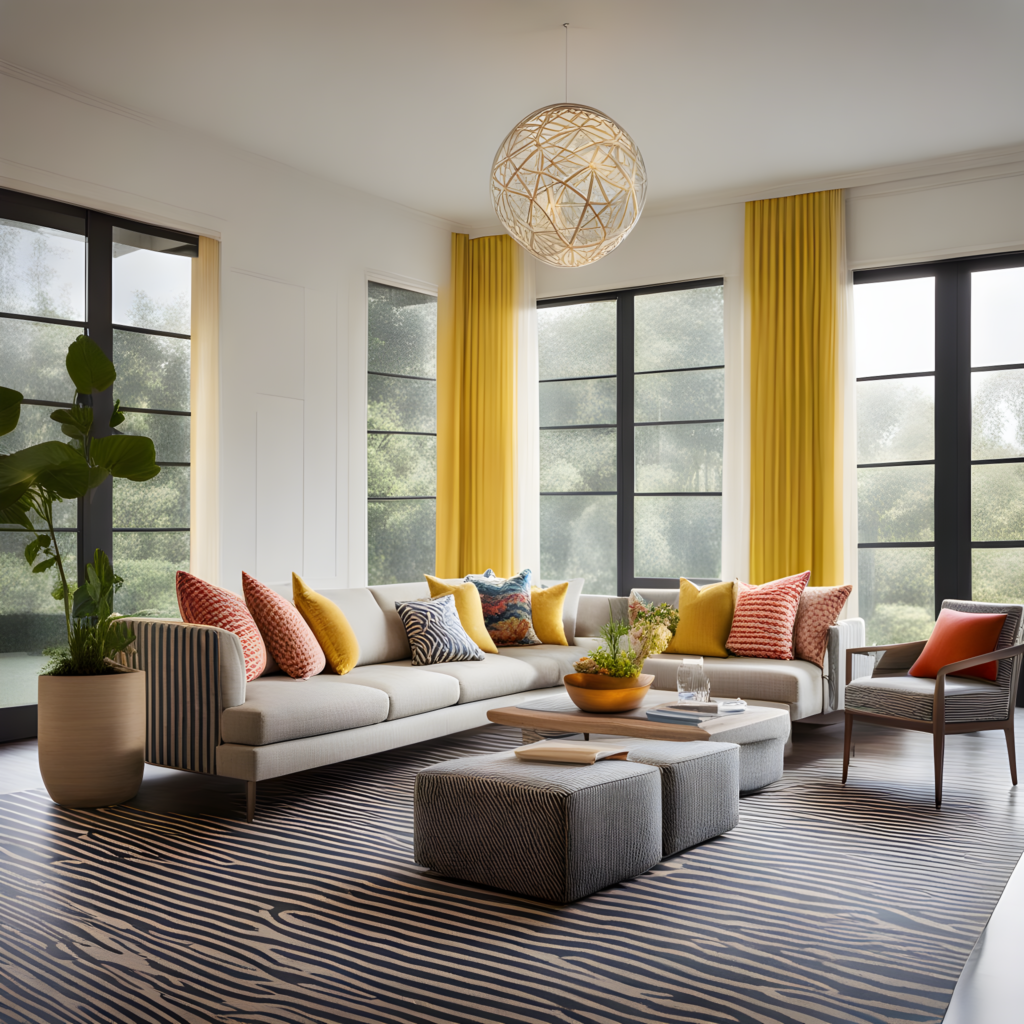
2. Select Patterns with Matching Colors
When choosing patterns, look for those that incorporate colors from your established palette. For example, if your primary color is deep blue, you might choose patterns with blue as a dominant or accent color. This creates a sense of cohesion and connection among the various elements in the room.

3. Vary Pattern Intensity
To avoid overwhelming the space, balance the intensity of patterns. Pair a bold, eye-catching pattern with a more subdued or neutral pattern. For instance, if you have a vibrant, large-scale floral pattern as your primary pattern, complement it with smaller, less intense patterns in coordinating colors.
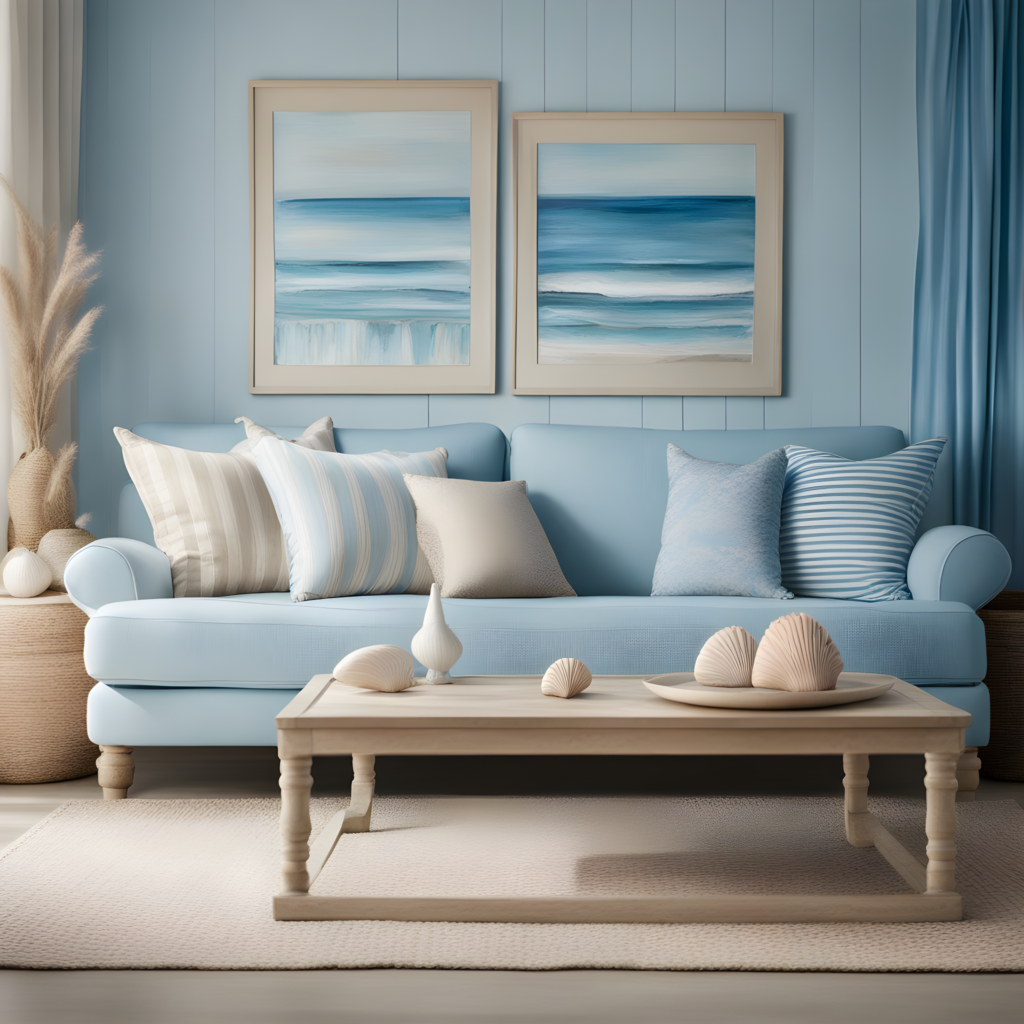
4. Play with Scale
Mixing patterns of different scales can add interest to a room. For instance, you might pair a large, bold geometric pattern with a smaller, intricate floral pattern. Ensure that these patterns share at least one or two colors to maintain coherence.

5. Experiment with Texture
Texture can also be an important factor in pattern coordination. Mixing different textures can make patterns work harmoniously. For instance, pair a smooth, solid-colored leather sofa with patterned fabric throw pillows to create a tactile contrast.
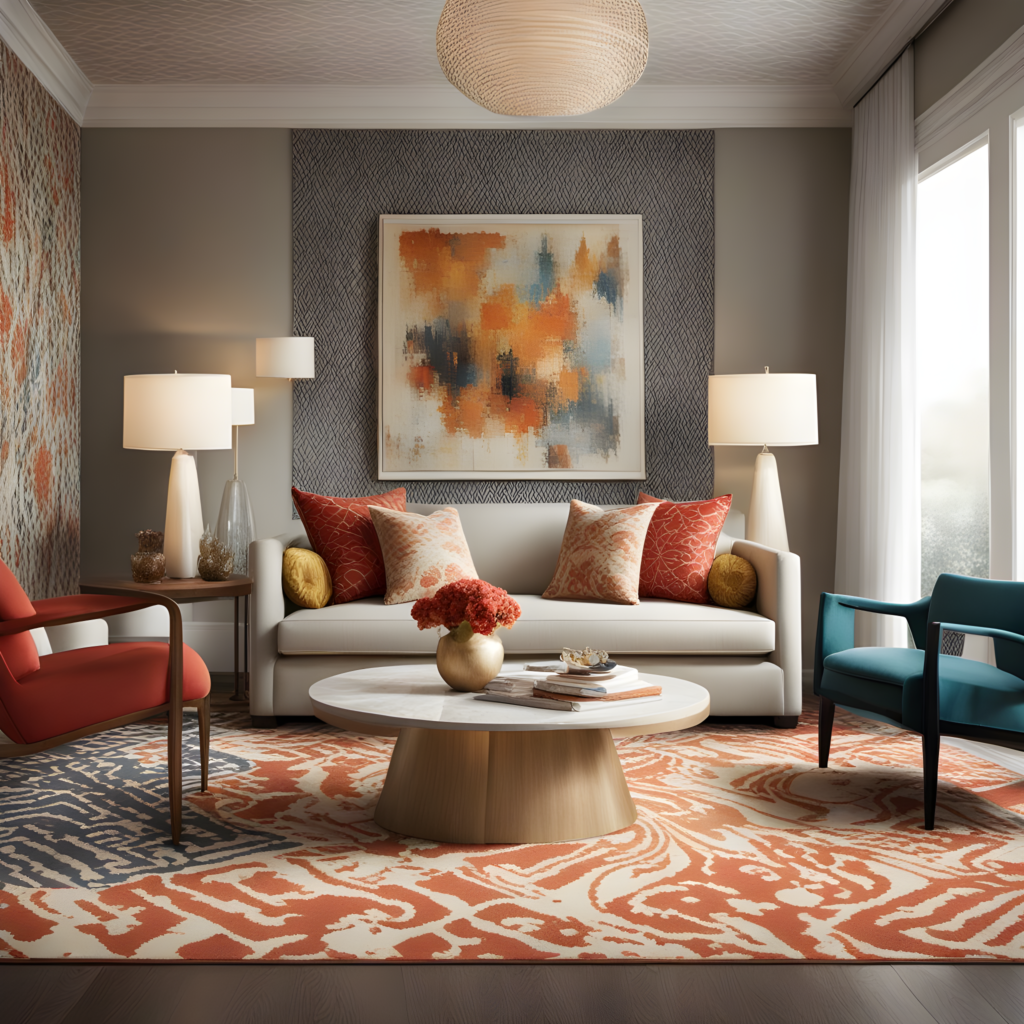
6. Use a Patterned Anchor
Sometimes, it’s helpful to have a patterned anchor in the room, such as a rug or a piece of artwork, that incorporates multiple colors from your palette. This can tie the entire design together and make it feel intentional.
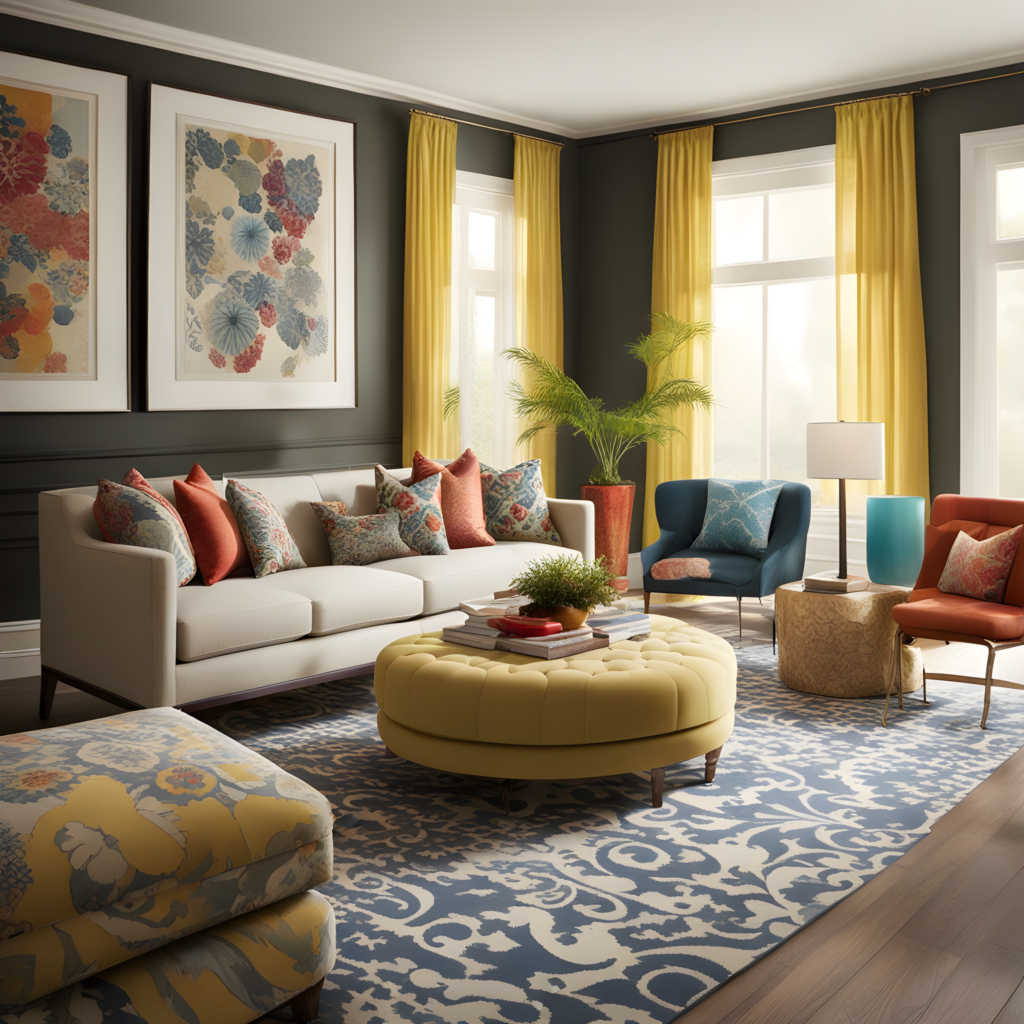
In the world of interior design, patterns are like the brushstrokes on the canvas of your living space, allowing you to create a masterpiece that reflects your unique style and personality. As we conclude this exploration of the art of mixing patterns, remember that the key to success lies in balance and coordination. By carefully selecting patterns that align with your chosen color palette, varying their scale and intensity, and ensuring they complement each other, you can transform your home into a captivating work of art.
More importantly, don’t forget that mixing patterns is not a rigid science but an opportunity for creativity and self-expression. It’s a chance to infuse your living spaces with your individuality, telling a story that is uniquely yours. So, embrace the fun and endless possibilities that patterns offer, and let your imagination run wild. Your home is your canvas, and mixing patterns is your artistic journey. May your living spaces be a reflection of your personal style, a testament to your creativity, and, above all, a place where you find comfort and joy. Happy designing!
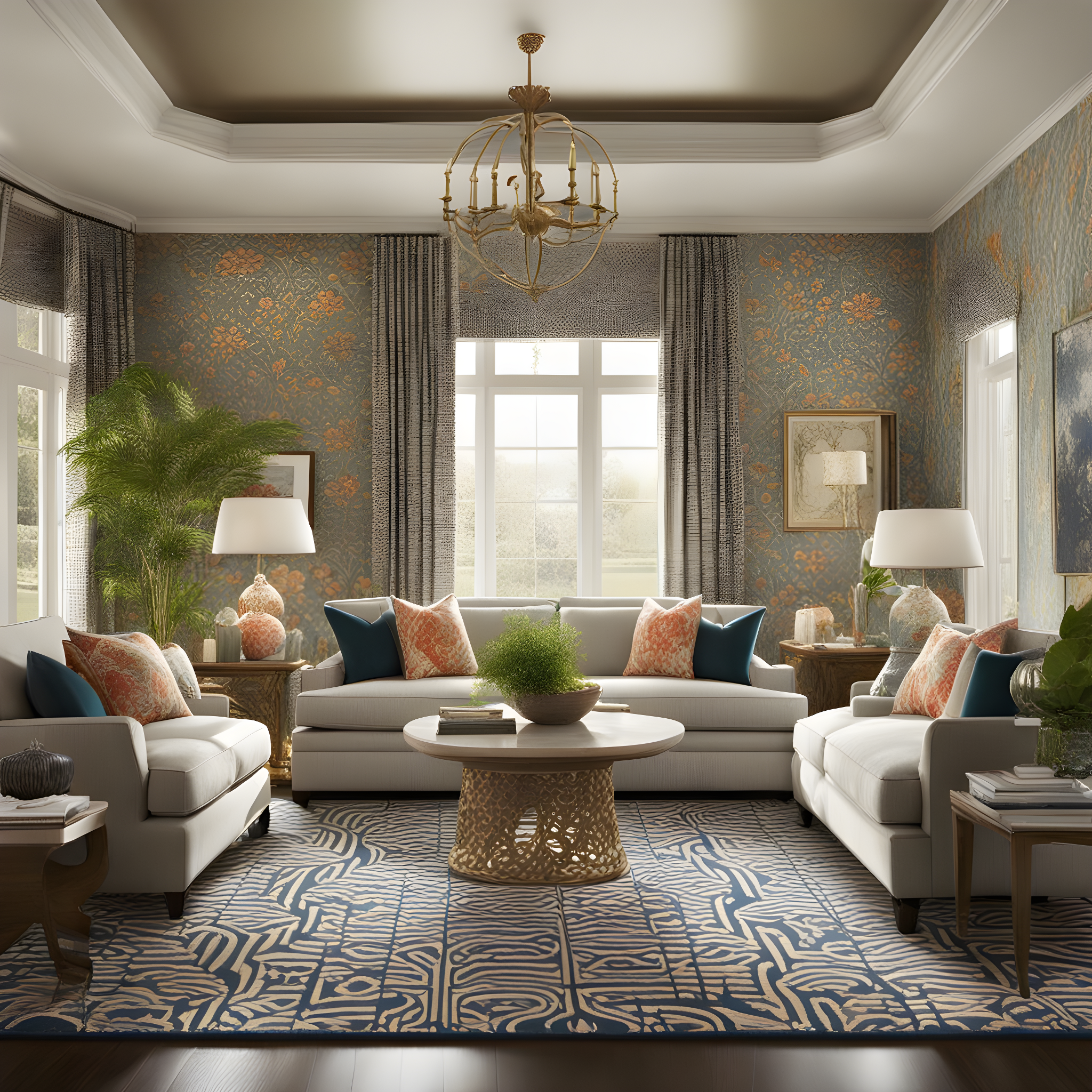
Leave a Reply